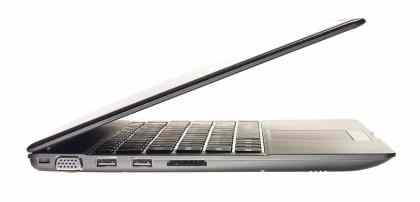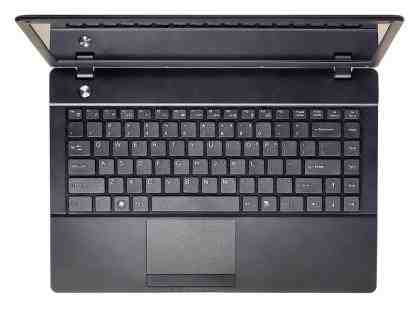Weighing in at just 1.65kg, the Nfinity is about as heavy as the Samsung Series 5 , the only other 14in Ultrabook we’ve seen, although the Series 5 managed to squeeze in an optical drive without gaining extra weight, unlike the Nfinity 2367, which doesn’t have one.
Novatech has unsurprisingly made sacrifices in other areas in order to reach such a low price, most notably with the build materials. Whereas most Ultrabooks are built completely from aluminium, only the Nfinity 2367’s lid is covered in metal, the rest of the chassis is moulded from plastic.

Connectivity has taken a hit, too. Although the Nfinity has three USB ports, none of them support the faster USB3 standard. It does have a full-size Ethernet port, a multiformat card reader and a combination audio jack, though.

Sadly, typing wasn’t a particularly pleasant experience, mainly because of the huge amount of flex in the keyboard tray, and the flex is noticeable even when applying a minimal amount of pressure. We were also irritated by the half-height Enter key, which frequently produced spelling errors instead of line breaks. The keys themselves are fairly bouncy and are sensibly spaced apart, so it’s a shame that its poor build quality lets it down. It has a decently sized touchpad that feels responsive enough in everyday use, but its plastic construction feels a little cheap and there’s no native support for multi-touch gestures.

We were also unimpressed by its 14in screen. Its 1,366x768 resolution is typical for a display of this size, but the viewing angles are simply appalling, providing a very thin margin between accurate and washed out colours. Even when we sat in the correct position, images were definitely lacking contrast. A glossy finish meant light reflections were a problem too, and there wasn’t a huge amount of screen tilt.











